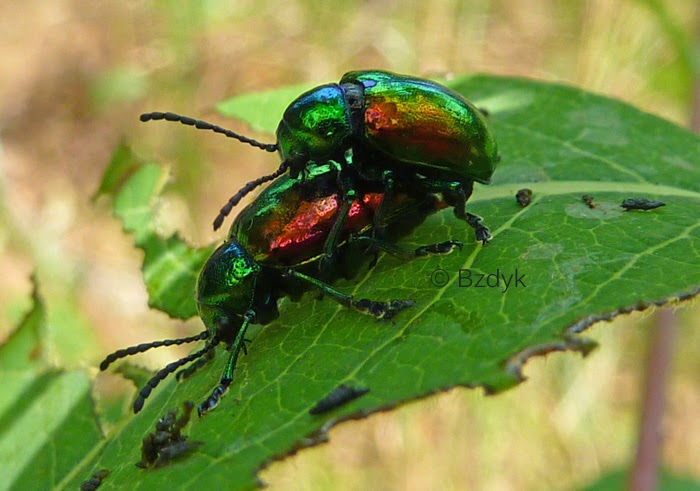Mimicry is a technique used by many insects. There are multiple kinds of mimicry. One kind is Müllerian is where species look like each other, and they all have something unsavory about them (poisonous, stings, bites). For example, many bees and wasps have aposematic (black/yellow warning) coloring to warn predators that they can sting. Then there is Batesian, where palatable or harmless species evolve to look like the more threatening model. The following examples are of the latter. Even when I've been out collecting I've been fooled by some excellent mimics, namely flies, and netted them thinking they were bees. In that instance, resembling a bee or wasp didn't help them.



Looks like a bumble bee right? When I saw it flying around, I thought so. Some excellent mimics even imitate behavior and flight. And this one was excellent, weaving around like a bee searching for flowers. But when it landed I saw it was a robber fly, family Asilidae. It hunts other insects so it's mimicry may serve two purposes, fooling predators and prey - by looking like a vegetarian bee!
One way to tell flies apart from bees and wasps is by the number of wings. Flies have two, bees and wasps have four (though they are often overlapping or held together).
Here's another fly that is often mistaken for a honey bee. It's a syrphid fly, or hover or flower fly. Expert fliers, they often look like bees. Small striped ones drink sweat from our skin and we incorrectly called them sweat bees as children. But there are small green bees that are also known as sweat bees, for the same habit, and they do sting.
Another syrphid, this one looking like a yellow jacket wasp. I thought it was one, and netted it.

Soldier fly, I personally think it looks like a shiny black wasp known as a cricket catcher.
I've shared photos of this one before - the hummingbird clear wing moth. It has coloration modeled after a bumblebee.


































